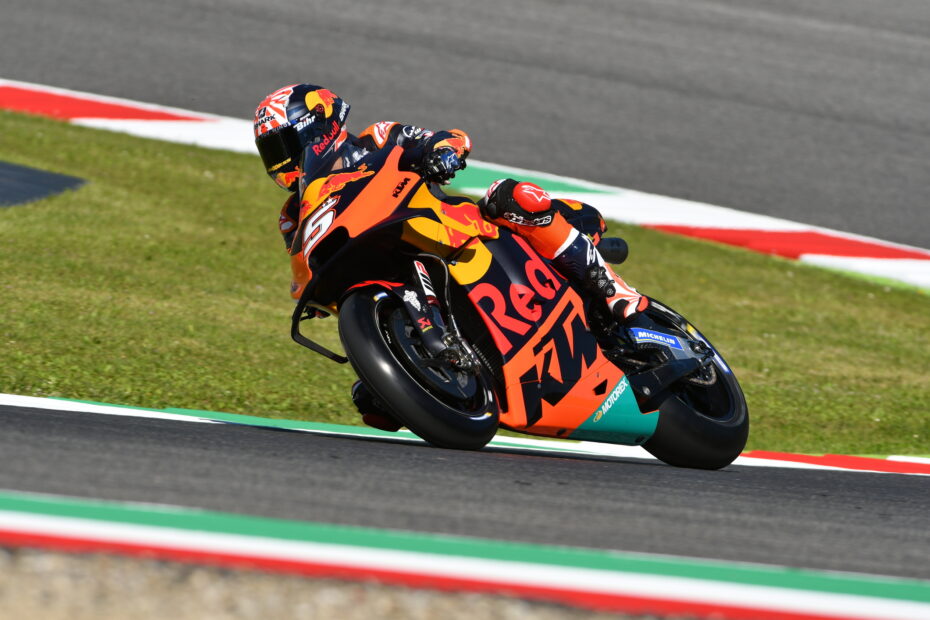In the fiercely competitive realm of MotoGP, the pursuit of innovation and technological excellence is relentless, forever pushing the boundaries of what’s achievable on the track. Amid this dynamic environment, a remarkable transformation is unfolding—the reemergence of carbon fibre chassis. While not an entirely new concept, a full-fledged carbon fibre frame hasn’t graced the MotoGP stage since Ducati’s bold experiments back in the seasons 2009-2011.
Ducati’s Daring Experiment
Ducati’s initial foray into the realm of carbon fibre chassis yielded mixed results. The lightweight innovation propelled Casey Stoner to victory, but the Italian powerhouse struggled to maintain its championship-winning form from 2007, when it adhered to the conventional steel trellis chassis. Consequently, in 2012, Ducati bid farewell to the carbon concept, pivoting back to the familiarity of a conventional aluminium design.
Aluminium Reigns Supreme
For years, aluminium chassis reigned supreme across the MotoGP grid until 2017, when KTM made a triumphant entrance. Renowned for its unwavering commitment to the steel trellis chassis, KTM resolutely clung to its distinctive approach, defying suggestions to adopt an aluminium frame like its peers.
KTM’s Unconventional Triumph
KTM’s unwavering faith in its unconventional methods bore fruit, with the team securing victories since 2020, demonstrating that their unorthodox approach can yield success. However, a recent development at the Misano race weekend hinted at the Austrian manufacturer’s next groundbreaking step. Riding atop a carbon fibre frame, 31-time MotoGP race winner Dani Pedrosa astoundingly clinched fourth place in both sprint and long races, signalling that KTM has made significant strides with its carbon fibre chassis concept.
A Race to Refine
While Aprilia has also experimented with its carbon fibre chassis, KTM’s progress appears more substantial. However, Pedrosa disclosed that the carbon fibre frame had undergone only limited testing before its grand prix debut, underscoring that KTM is still in the initial phases of exploring its potential.
The Quest for Improvement
KTM’s primary objective with the carbon fibre chassis, like any other, is to enhance turning and grip. Notably, drive grip has posed a challenge for KTM riders in recent years. At the Austrian Grand Prix, while the RC16 exhibited raw horsepower, it struggled to match Ducati’s initial drive out of corners, a fact emphasized as Francesco Bagnaia secured a dominant win at the Red Bull Ring.
Measuring the exact performance gain from KTM’s new chassis is a complex endeavour at this stage. Nonetheless, the great performance in Misano by Dani Pedrosa hint that KTM is definitely on a right trajectory for even more profound success in the future.
Chassis Design Takes Center Stage
In the MotoGP arena, traditionally aerodynamics and lately ride height devices have claimed the spotlight. However, it is increasingly evident that chassis design is emerging as the next pivotal battleground, especially if regulations curtail the use of aero and ride height devices in the future.
Next Steps for KTM and Other Manufacturers
The next chapter in the KTM carbon fibre chassis saga was unveiled already in the Monday’s test at Misano, where Jack Miller and Brad Binder got to test the innovation. They completed whopping 140 laps combined, but we’re both obviously pretty tight-lipped about the new frame as KTM doesn’t want to spill any beans and possibly aid a competing team.
This frame exemplifies the determination of European manufacturers to push the boundaries and explore new technologies. While Ducati, KTM, and Aprilia have surged ahead, Japanese giants Honda and Yamaha have grappled with adapting their longstanding methodologies to evolving projects.
KTM’s receptiveness to innovation and fresh approaches is vividly demonstrated in their relentless pursuit of a championship title. Dani Pedrosa, with experience in both Japanese and European working environments, lauded KTM’s commitment to innovation, affirming, “I can only speak for KTM, and they are trying their best, as you can see. I think they are open to new technologies and new ways, and the team is working very well.”
A Glimpse Into the Future
Looking ahead, it should come as no surprise to witness carbon fibre frames gracing the garages of also other manufacturers in the upcoming pre-season. The evolution of carbon fibre chassis in MotoGP epitomizes the sport’s unwavering pursuit of peak performance and the resolute determination of manufacturers to outpace their competition.
